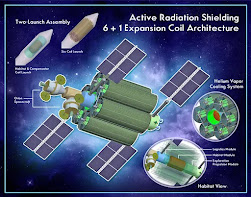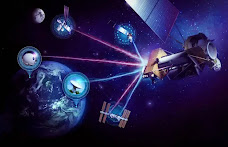Joan Palmiter Bajorek's "Your AI Roadmap" serves as a comprehensive guide for individuals seeking to navigate their careers in the rapidly evolving landscape influenced by artificial intelligence (AI). The book is structured into two main parts: the first focuses on securing a job in AI, while the second addresses financial independence and entrepreneurship beyond traditional employment. Bajorek emphasizes practical strategies for future-proofing one's career and income, leveraging networking, personal branding, and innovative financial practices.
Detailed Analysis
The book starts with an introduction that contextualizes the urgency of adapting to AI's impact on job security and income generation. Bajorek shares her personal journey and outlines the goal of empowering readers to take actionable steps towards career advancement and financial stability.
Key Themes:
Career Resilience: The necessity of developing a resilient mindset to cope with job market volatility.
Networking: Emphasizing the importance of relationships in career advancement, with a focus on leveraging weak ties.
Financial Literacy: Encouraging readers to understand their finances deeply, including income diversification and investment strategies.
Chapter Summaries
Future-Proofing Your Career: Discusses the importance of adaptability in the face of AI advancements.
Crafting Goals with WOOP Method: Introduces a structured goal-setting framework.
Job vs. Career: Differentiates between job security and career development.
Networking Strategies: Offers insights into effective networking practices.
Building a Personal Brand: Guides readers on how to establish their professional identity.
Storytelling for Career Growth: Highlights the power of narrative in personal branding.
Navigating Job Markets: Provides strategies for finding jobs in AI.
Portfolio Development: Emphasizes the importance of showcasing work through portfolios.
Financial Independence: Discusses alternative income streams beyond traditional employment.
Investment Strategies: Offers advice on saving versus investing.
Retirement Planning: Guides readers on setting financial goals for retirement.
Wealth Expansion Ideas: Suggests various methods for increasing income streams.
Organizational Skills for Success: Encourages effective time management and organization.
Experiencing Financial Freedom: Reflects on how financial independence can transform life.
Mindset Shifts for Growth: Advocates for a growth mindset in facing challenges.
Important Key Challenges
According to Joan Palmiter Bajorek's book "Your AI Roadmap: Actions to Expand Your Career, Money, and Joy," several key challenges confront individuals pursuing a career in artificial intelligence (AI). Here are the main obstacles outlined in the text:
1. Job Security and Layoff Anxiety
The book highlights that no job is entirely secure, especially in the rapidly changing landscape of AI. Layoff anxiety is prevalent, with nearly 50% of Americans expressing concerns about job stability, and many having experienced layoffs since 2021. This reality creates a climate of uncertainty for professionals in AI, as even high-level positions are not immune to downsizing1
2. Skill Relevance
Bajorek emphasizes the importance of continually updating skills to remain competitive in the AI job market. As technology evolves, professionals must adapt by acquiring new competencies or pivoting their career paths to align with emerging trends and demands1
3. Networking Challenges
Effective networking is crucial for career advancement in AI; however, many individuals struggle with building and leveraging their professional networks. The book discusses the concept of "weak ties" and how they can significantly aid career growth, but overcoming the barriers to networking can be daunting for many1
4. Imposter Syndrome
Many professionals in AI face imposter syndrome, which can hinder their confidence and willingness to pursue opportunities. This psychological barrier can prevent individuals from fully realizing their potential and taking necessary risks in their careers1
5. Financial Literacy
Understanding financial management is essential for navigating career transitions and achieving financial independence. Bajorek points out that many individuals lack knowledge about managing their finances effectively, which can lead to insecurity during periods of job instability1
6. Market Volatility
The AI job market is characterized by rapid changes and volatility, making it challenging for professionals to predict future opportunities or job security. This unpredictability requires individuals to be proactive and adaptable in their career strategies1
These challenges highlight the complexities faced by those pursuing careers in AI and underscore the importance of resilience, continuous learning, and strategic networking as crucial components for success in this evolving field.
Applying the WOOP Method in Daily Life
The WOOP method, which stands for Wish, Outcome, Obstacle, and Plan, is a practical framework for setting and achieving personal goals. It can be effectively applied in daily life to enhance goal attainment by following these steps:
1. Wish
Identify Your Goal: Start by clearly defining what you truly wish to achieve. This could be anything from improving your health to advancing your career.
Example: "I wish to run a marathon."
2. Outcome
Visualize Success: Consider the best possible outcome of achieving your wish. What will it feel like? How will it impact your life?
Example: "I will feel accomplished and healthier, and I will gain confidence."
3. Obstacle
Acknowledge Challenges: Identify potential obstacles that may hinder your progress. Be honest about internal and external barriers.
Example: "I often feel too tired after work to train."
4. Plan
Create an Action Plan: Develop a specific plan to overcome these obstacles. Use "If-Then" statements to prepare for challenges.
Example: "If I feel tired after work, then I will go for a short run instead of skipping training altogether."
Daily Implementation Tips
Set Regular Check-Ins: Schedule weekly or monthly reviews of your goals using the WOOP framework to adjust your plans as needed.
Use Reminders: Keep visual reminders of your wishes and outcomes in places you frequently see, such as on your phone or a vision board.
Accountability: Share your goals with friends or family who can help keep you accountable.
By incorporating the WOOP method into daily routines, individuals can systematically approach their goals, anticipate challenges, and create actionable strategies that lead to success.
Contributions to Knowledge
The book provides a structured approach to understanding the intersection of AI, career development, and financial literacy, making it a valuable resource for professionals across various fields looking to adapt to technological changes.
Recommended Resources
Books:
"The Lean Startup" by Eric Ries
"Atomic Habits" by James Clear
"The Millionaire Fastlane" by MJ DeMarco
Videos:
TED Talks on AI and career development
YouTube channels focusing on personal finance and entrepreneurship
This comprehensive overview encapsulates Bajorek's insights into navigating careers in an AI-driven world while emphasizing the importance of adaptability, networking, and financial acumen for long-term success.


























